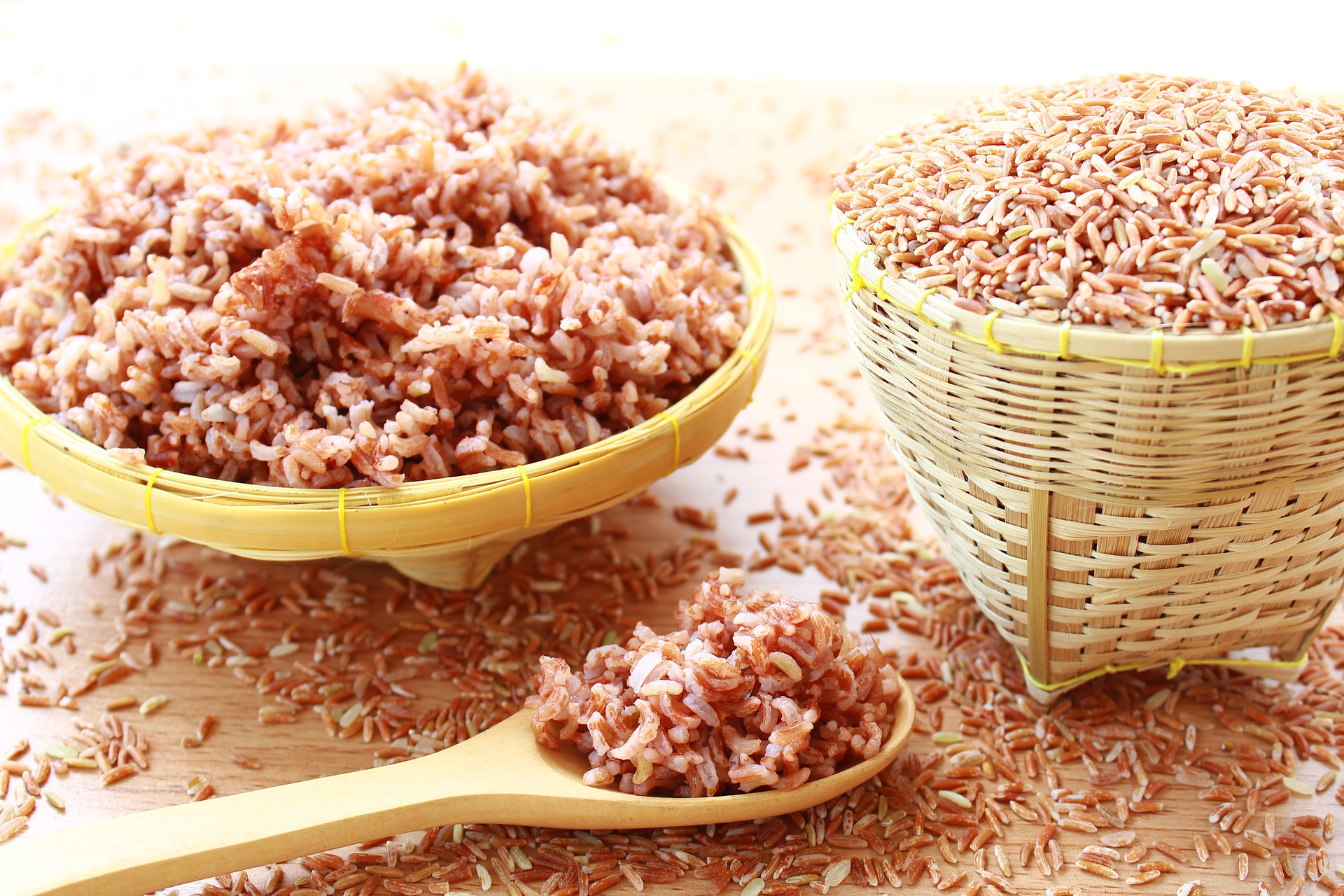Rice is a dietary staple in many countries around the world. In some Asian countries like India and Thailand, people eat rice in more than one meal in a day. But can you eat rice On a plant based diet?
Many health experts and diets do not favor rice, mainly white rice. However, it’s still a grain and technically can be consumed on a plant-based diet. Also, there are benefits to including rice in your diet, at least when you do it in a decent amount.
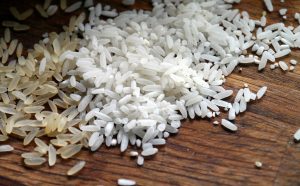
The gist is that rice of all kinds are generally rich in carbs. So you have to be mindful of their effect on your body. Too many carbs are a bad thing, whether plant-based or not.
You can, and you should eat rice when you switch to a plant based diet. However, some variations are healthier than others. Therefore, you want to stick to those in order to reap the maximum benefits.
What is Rice Exactly?
We all know what rice looks like and tastes like, but many of us don’t know everything about it. Rice is one of the most common grains in the world. It has the same components as most grains:
Endosperm: This is the largest part of a rice grain, containing carbs and a little bit of protein. The carbs in the endosperm are polysaccharides. In other words, it mostly contains starch.
Germ: This is the core of the rice grain containing all the nutrients, including carbohydrates, fat, protein, and minerals.
Bran: This is the hard outer layer that protects the insides. It’s rich in fiber, antioxidants, and minerals.
Types and Varieties of Rice
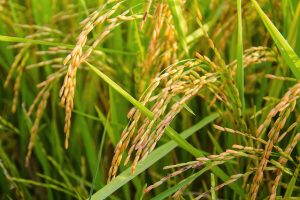
There are many varieties of rice, coming in various shapes and sizes. In cultures where rice serves as a staple, the varieties are taken quite seriously. However, at a very basic level, we can divide rice into three types:
- Long grain
- Medium grain
- Short grain
The long-grain rice gets the name from its size and color, respectively. It’s a tad bigger than the medium and short grain. On the other hand, brown rice is a bit thicker and has a more rigid texture. When you eat brown rice, it has a more chewy feel, as compared with white rice.
There’s a third type as well, the medium grain. It’s essentially white rice but has a shorter kernel. However, it’s not as common as the other two.
Within the white rice family, you’ll find so many variations. Most of these variations contain starch in high amounts but differ in terms of texture and aromas.
For instance, sticky rice, which is grown mainly in Southeast Asia, has high amylopectin. This polymer of glucose gives it a sticky texture. It’s also common for making rice flour.

There are variations of the aroma of rice as well. The popular ones in this regard are the Basmati and Jasmine rice. Basmati rice is common in South Asian cuisines, whereas Jasmine rice is used in Thai cuisine.
Moreover, there are also variations in brown rice. Brown rice generally has a pale brown color, but some of its variations are quite dark. Forbidden rice or black rice is a highly nutritious type of rice that has a dark purple color. Again, it’s common in Asian cuisines and is often mixed with white rice.
Is Rice Good For You?
Those who have followed a weight-loss diet at any point in their life would know that rice is off-limits in such plans. The fact of the matter is that rice of any kind is rich in carbohydrates. So if you’re trying to stay off carbs, rice may not be the best food choice.
We’ve already discussed that not all carbs are bad carbs. Some healthy carbs, especially fiber (yes, that’s a carb), are quite healthy. Even rice that is not high in fiber content has its unique benefits.
When deciding whether rice is good for you or not, you have to look at the Glycemic Index. According to an analysis by the British Journal of Nutrition, the GI of rice ranges between 48 to 93. So you see, there is rice with good carbs (low GI) and rice with bad carbs (high GI).
To better understand the impact of rice, you have to look at the nutrient profile of this grain. Depending on your needs and fitness goals, these nutrients could very well be beneficial for you.
Rice Nutrition Facts
Rice is mostly carbohydrate and just a little amount of protein. It also contains the amino acid lysine, which is not ideal but forgivable. Then you have fiber as well, which differs depending on the type of rice.
It’s not all carbohydrates, as it also has some minerals that are very important for your overall health. These include folate, manganese, selenium, iron, niacin, and Vitamin B6. Some rice variations, of course, are richer in minerals than others. These are some highlights of rice nutritional value.
If you just take the nutrients into account, rice is not that bad after all. Your body needs all these nutrients to function, especially carbs. Carbs provide the most energy, so a meal containing rice should ideally give you a lot of energy.
White Rice vs. Brown Rice
The ultimate answer to the question ‘can you eat rice on a plant based diet’ lies in the comparison of the two basic types. It’s an age-old debate in the health community, and there have been many studies.
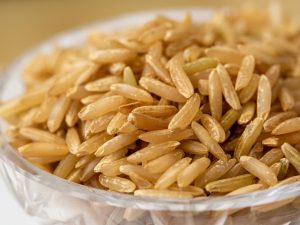
Brown rice is the whole grain of rice as it comes from the crops. It has the bran, endosperm, and germ, all there. The bran is rich in fiber, whereas the germ is rich in all sorts of nutrients. Because of the hard outer layer, it has a coarse texture.
White rice, on the other hand, is heavily processed. In this processing, the grain loses the bran and the germ, leaving it mostly with the carbs. This is usually done to improve the taste, aroma, and texture of the rice. Also, doing so makes the grain last longer.
Many companies that produce white rice add more nutrients like Vitamin B, iron, thiamine, and folic acid. This is to make up for the lost nutrients during processing. Otherwise, the grain would be just bare carbohydrates.
Even with the added nutrients, white rice grains still lack a decent amount of fiber. Those you’ll find in brown rice generally, which have the bran still intact.
What are the Health Benefits of Brown Rice vs. White Rice?
The only processing brown rice receives is the removal of husk. It’s a whole grain in its natural form, so it’s quite healthier than the processed white rice grain. On a plant based diet, you want to stick to natural and unprocessed foods, and brown rice is one of those.
Here are some of the benefits of consuming brown rice and its closer variants like red and black rice:
- Rich in fiber and nutrients
- Improves metabolism and digestion
- Reduces the risk of cardiovascular diseases and type II diabetes
- High levels of phenolic compounds which help prevent cancer
- Rich in antioxidants
- Does not make you gain weight/fat
Nutrients in White Rice vs. Brown Rice
To better understand the difference between the two types of grains, you should look at the composition of each. While the caloric difference is not significant, brown rice is richer in many nutrients. Most importantly, the fiber content of brown rice is double that of white rice.
Here’s the nutrient profile of both white rice and brown rice according to the USDA FoodData Central:
| White Rice | Brown Rice | |
| Calories per 100 grams | 123 | 111 |
| Carbohydrates | 30 grams | 23 grams |
| Fiber | 0.9 grams | 1.8 grams |
| Protein | 2.9 grams | 2.6 grams |
| Fat | 0.4 grams | 0.9 grams |
| Manganese | 18% of RDI | 45% RDI |
| Selenium | 13% of RDI | 14% of RDI |
| Niacin | 12% of RDI | 8% of RDI |
| Iron | 1% of RDI | 2% of RDI |
| Vitamin B6 | 8% of RDI | 7% of RDI |
Is Rice Good for Losing Weight?
It’s a common belief in the fitness community that eating white rice can make you fat. This is mainly because white rice is basically all carbs. However, it’s real effects differ based on several factors.
Brown rice, on the other hand, has been proven to prevent weight gain. It’s a whole grain, rich in fiber, so it does not increase weight. According to a research study published in the American Journal of Clinical Nutrition, eating whole grains can regulate weight.
These grains make you feel fuller, and as a result, you consume fewer calories. Similarly, it takes more energy to digest these foods, so you end up burning calories. This is why you’ll see whole grains, including brown rice, in weight-loss diets.
The opposite is the effect of white rice, as it’s mostly loaded with starch. The calories are higher, the carbs are higher, and the fiber and mineral content is low. Therefore, processed white rice is nowhere as healthy as the whole grain brown rice.
When you’re on a weight loss program, you have to cut carbs. That would include white rice as well. However, different people respond to rice differently. In general, large amounts of rice can result in weight gain.
Is Rice Gluten Free?
Yes, both white rice and brown rice are essentially gluten-free. So these are viable options for those with celiac disease.
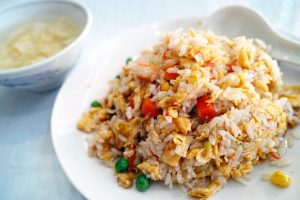
There are so many ways to eat rice that you can never get bored of them. You can use rice with other plant-based foods that may be rich in protein or fat, as the rice would provide the main carb intake. It goes well with curries, stews, and stir-fry veggies.
Some people may not like brown rice as much as white rice. They can use those rice medleys from some companies that combine different variations of rice.
What is the Suggested Rice Serving?
Generally, you need around six to eight ounces of whole grains a day, according to the guidelines by USDA. This intake could come from brown rice alone or a combination with other grains, like breakfast cereal.
With white rice, it’s more about portion control. Since it’s rich in carbs that are not necessarily healthy, you have to stick to a small portion in a single day. If you like white rice, consume it in little quantity in a meal and balance it with other vegetables (preferably rich in protein).
Can I Eat Rice Daily?
Not really, if you eat rice in a controlled amount, in line with your overall calories and nutrient intake. In many cultures, rice serves as a daily part of the meal. Nevertheless, you should not consume a lot of white rice on a daily basis.
According to the Harvard School of Public Health, eating white rice five or more times a week increases the risk of type II diabetes. A study in the US found that those who ate five or more servings of rice in a week had the diabetes risk increase by 17%. On the other hand, those that had two or more servings of brown rice had the risk reduced.
Also, rice can contain inorganic arsenic. It can be hazardous if a lot of it ends up in your body. However, the amount of arsenic per serving is usually very small. This video from NutritionFacts.org shows that arsenic is common in whole grains and explains its effects.
Are Rice Cakes Good For You?
Rice cakes made from brown rice are a healthy vegan snack. These pack a lot of healthy carbs in relatively fewer calories. You can eat rice cakes on a plant based diet as an alternative to crackers, which are mainly processed carbs.
Rice cakes, especially those made from brown rice grains, are a great option for those trying to lose weight. They can satisfy your snack cravings without increasing calorie intake.
Summary of Rice
So, can you eat rice on a plant based diet? Yes, you can. Rice is a versatile grain, one that has been used in many cuisines for thousands of years. If people have been eating something for that long, it’s probably good. While all types of rice are plant-based, some are healthier than others.
You should not avoid white rice completely just because they are high in starch. It’s perfectly normal to have it once in a while. After all, some white rice varieties are absolutely delicious and can make any meal hearty.
You may also like: WHAT CAN YOU EAT ON A PLANT BASED DIET? >>CLICK HERE!

